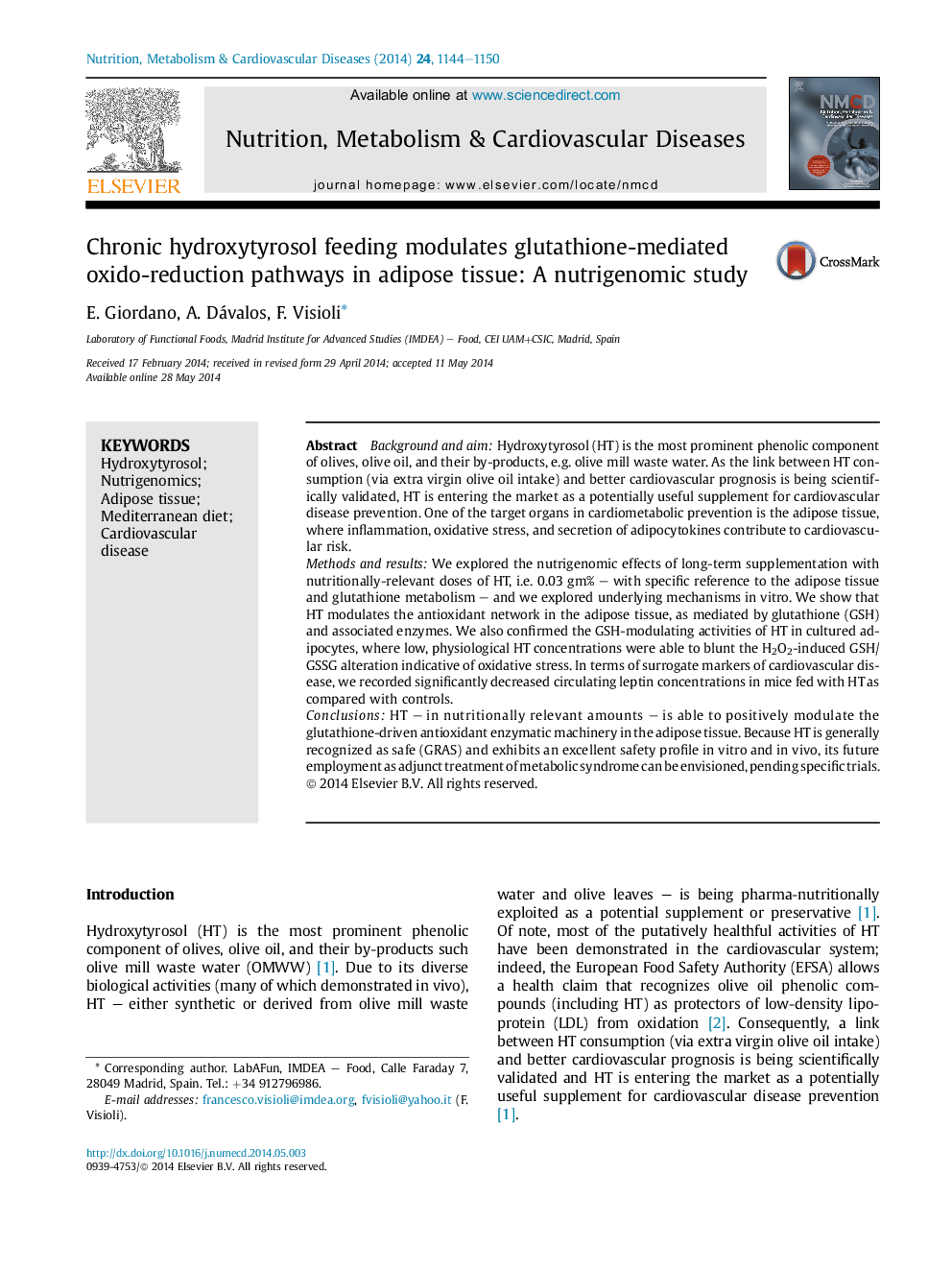| کد مقاله | کد نشریه | سال انتشار | مقاله انگلیسی | نسخه تمام متن |
|---|---|---|---|---|
| 3001948 | 1180687 | 2014 | 7 صفحه PDF | دانلود رایگان |
• We performed a nutrigenomic study with low-dose hydroxytyrosol.
• We show that HT modulates the antioxidant network in the adipose tissue.
• This network is mediated by glutathione and associated enzymes.
• We confirmed these data in culture adipose tissue cells.
Background and aimHydroxytyrosol (HT) is the most prominent phenolic component of olives, olive oil, and their by-products, e.g. olive mill waste water. As the link between HT consumption (via extra virgin olive oil intake) and better cardiovascular prognosis is being scientifically validated, HT is entering the market as a potentially useful supplement for cardiovascular disease prevention. One of the target organs in cardiometabolic prevention is the adipose tissue, where inflammation, oxidative stress, and secretion of adipocytokines contribute to cardiovascular risk.Methods and resultsWe explored the nutrigenomic effects of long-term supplementation with nutritionally-relevant doses of HT, i.e. 0.03 gm% – with specific reference to the adipose tissue and glutathione metabolism – and we explored underlying mechanisms in vitro. We show that HT modulates the antioxidant network in the adipose tissue, as mediated by glutathione (GSH) and associated enzymes. We also confirmed the GSH-modulating activities of HT in cultured adipocytes, where low, physiological HT concentrations were able to blunt the H2O2-induced GSH/GSSG alteration indicative of oxidative stress. In terms of surrogate markers of cardiovascular disease, we recorded significantly decreased circulating leptin concentrations in mice fed with HT as compared with controls.ConclusionsHT – in nutritionally relevant amounts – is able to positively modulate the glutathione-driven antioxidant enzymatic machinery in the adipose tissue. Because HT is generally recognized as safe (GRAS) and exhibits an excellent safety profile in vitro and in vivo, its future employment as adjunct treatment of metabolic syndrome can be envisioned, pending specific trials.
Journal: Nutrition, Metabolism and Cardiovascular Diseases - Volume 24, Issue 10, October 2014, Pages 1144–1150
